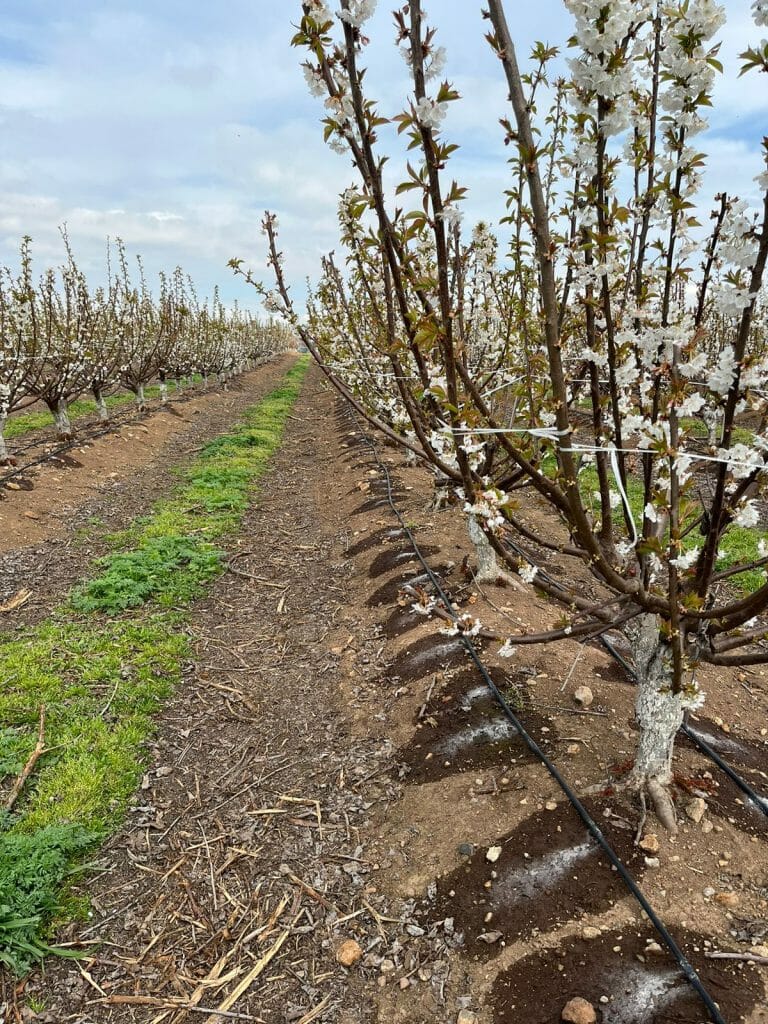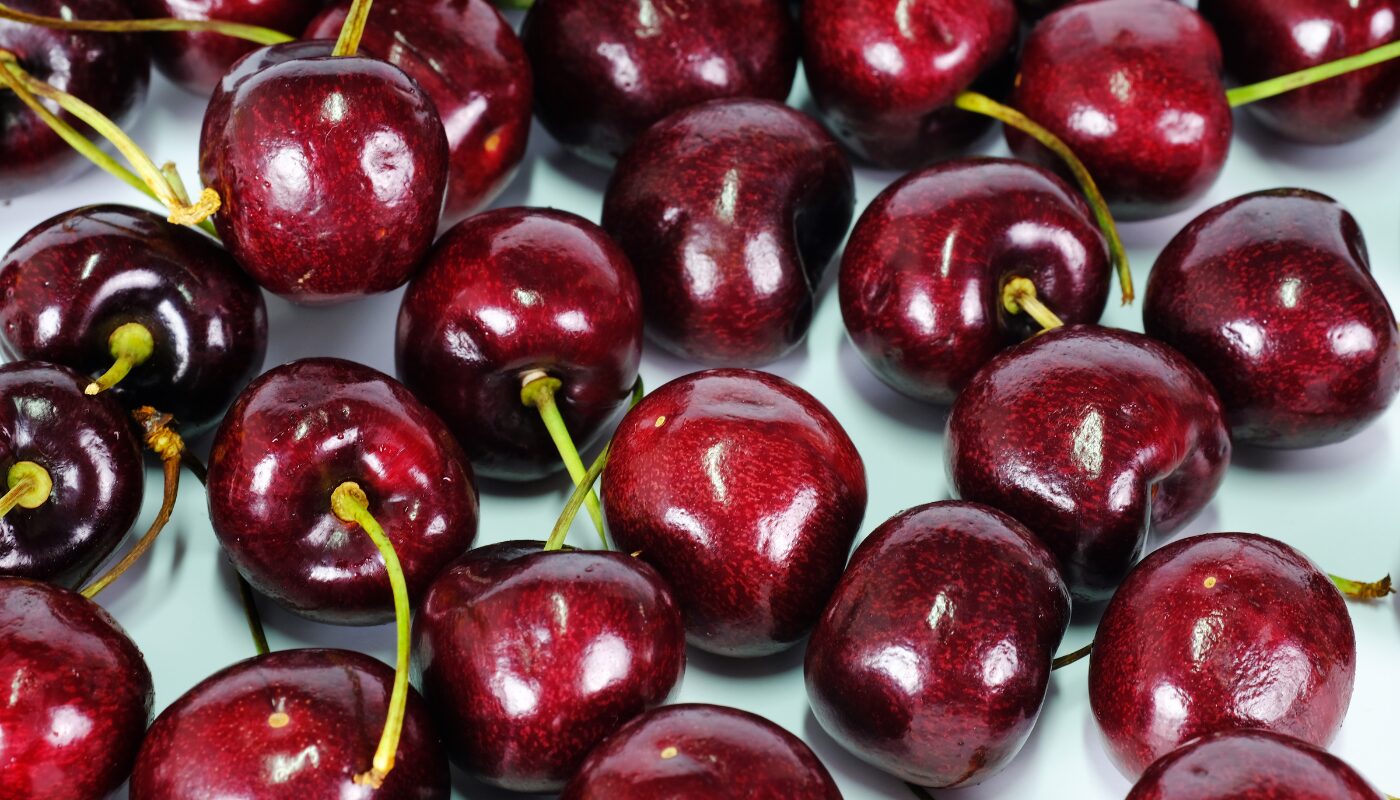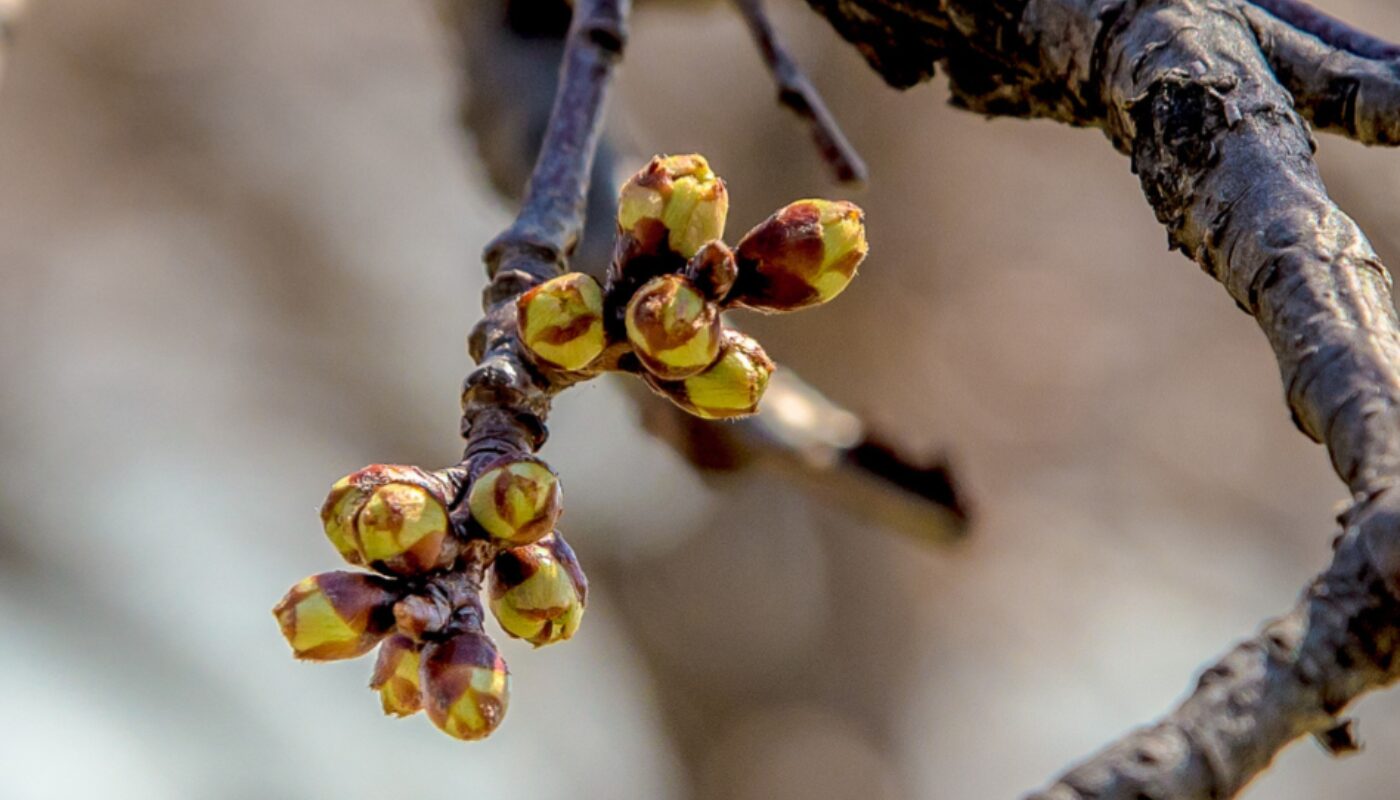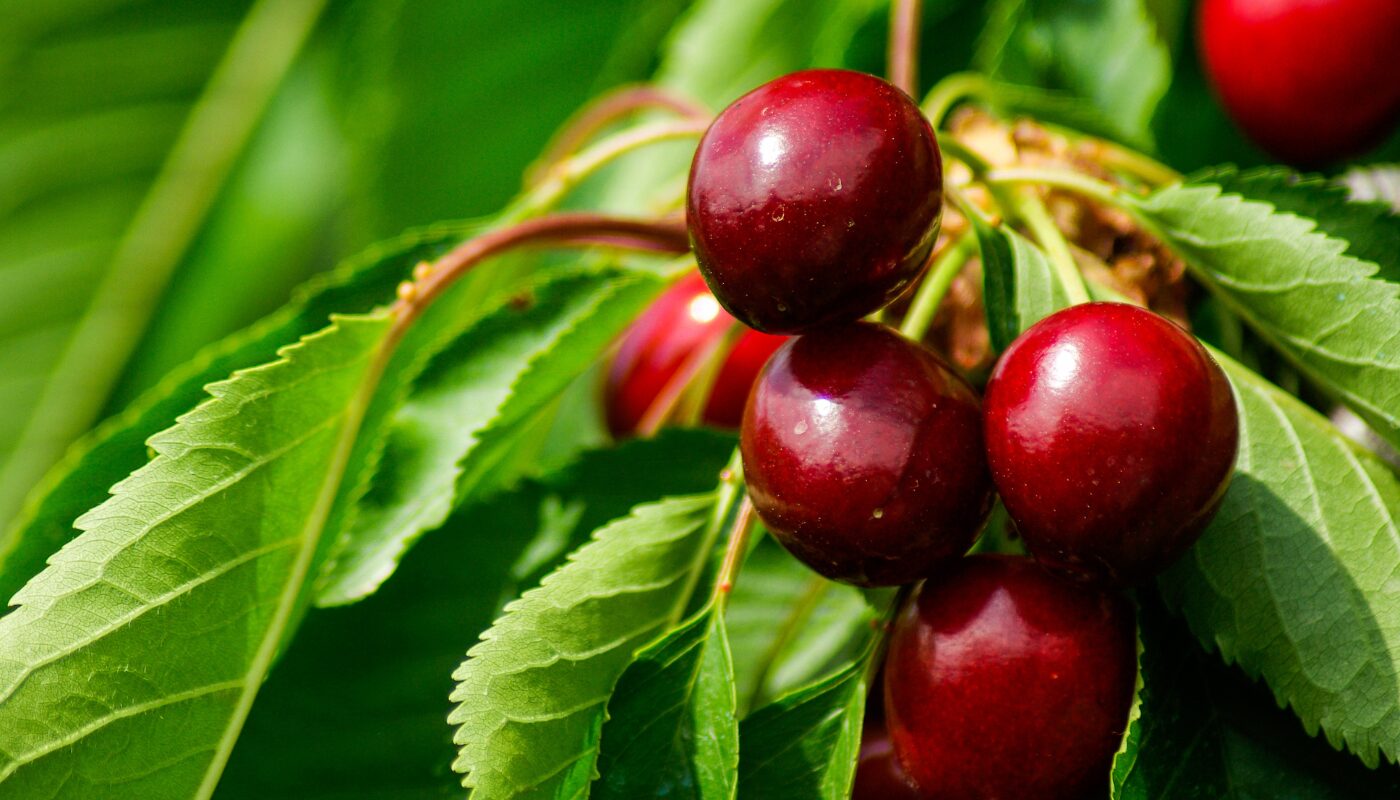By: Emilio Martínez, Agricultural Engineer, R&D Leader at Avium; Carlos Tapia, M.Sc., Technical Director at Avium.
Nutritional balance or mineral nutrition is one of the aspects that generates great interest in understanding the responses of each nutrient in the physiological processes of plants, especially in cherry cultivation, in relation to its condition for each variety/rootstock, among others. A basic fertilization program is undoubtedly essential to promote practices aimed at ensuring adequate physiological activity in the plant, in line with obtaining fruit of good condition and export quality. These programs are built based on the intensity of nutrient extraction related to the information obtained from fruit and foliar analyses conducted during the season.
The development of a soil and/or irrigation fertilization program should be crafted understanding the degree of nutrient absorption in the solution, primarily determined by the relationship with the plant growth rate and the concentration of nutrients present in the new organs, provided that the minerals are available. Thus, there are numerous factors that determine the availability and mobility of nutrients, which vary according to the species and combinations of varieties vs. rootstocks, as well as according to soil characteristics and conditions, organic matter content, among other factors. Additionally, foliar fertilization is an important technique for cherry production management, providing significant support to complement soil and/or fertigation programs conducted during the season. There are various factors that influence achieving maximum efficacy, and this is subject to constant study to determine the moments and physico-chemical, biological, and environmental principles that affect the absorption of nutrients applied through foliar sprays.
Cherry cultivation is characterized by having a very brief flowering to harvest stage, which can range from 50 to 80 days depending on the variety. That’s why a pre-harvest foliar nutrition program is essential in the early phenological stages of cultivation, especially products with bio-stimulating action and elements like Ca, which can be attractive during springs with adverse conditions.
The crop nutrition primarily involves the rational allocation of nitrogen, calcium, and potassium at different phenological stages. For nitrogen, this is done at the post-harvest stage, prior to foliar nutritional analyses and based on soil monitoring data. The use of amino acid-based products pre-harvest is a practice that can be attractive to use, especially in orchards with high loads that exhibit poor vegetative expression, contributing to improving the physiological processes of the treated plants. These additions do not fully meet the crop’s nitrogen demand but do generate an early biological effect similar to base nitrogen nutrition.

In relation to the fertilization of calcium (Ca) and potassium (K) in cherry cultivation, a foliar program in the early phenological stages of the cherry tree has shown good results when applied at higher label doses, with potassium applied at stages close to the straw color of the fruits. As for fertigation applications pre-harvest, calcium through its various formulations has reported interesting experiences when applied between 15 to 20 days after full bloom (DFBF), experiments that have been carried out in recent years.
Within this dynamic of foliar and soil nutrition programs, there is always a desire to understand the responses generated in the final product, which is the fruit, as what is not measured cannot be understood. This approach indeed allows for the correction or inclusion of elements in a base fertilization program in cultivation, which is one of the key components for obtaining quality fruit.
Since the ‘star’ of all this is the fruit and ultimately it receives all the applause (behind the scenes in this particular case: the nutritional management done during the season), the focus is on elucidating the importance of nutrition in the quality and condition of the fruit. The work done in recent years could be a starting point for understanding the various relationships between the most important minerals, with the main focus on the condition of fruit dry matter percentage (DM). While DM may not be the most important attribute of cherries when compared to size, it is a fundamental index related to fruit firmness and to some extent its sweetness.
The relationships established are aimed at understanding the responses between minerals, which could provide us with evidence of the correlation between DM and the associated minerals.
Firstly, it should be noted that the analyses were conducted on fruit with harvest indices suitable for each variety, and they were sampled and sent to the laboratory according to their evaluation protocol to obtain results for each nutrient, generating important data based on 5 sampling seasons. Secondly, the study was conducted using a scatter plot matrix (SPlotM), and the corresponding correlations (Pearson) were made for each case. This allows us to display the degree of correlation that exists in each of them
Figure 1. Scatter plot of different nutrients and DM in fruits of cv. Regina on Gisela 6 rootstock.

The Pearson correlation coefficient is a statistical test that allows us to observe the level of relationship between two continuous variables, represented on a scale from -1 to +1. When positive values are obtained between two variables, it indicates they have a “positive” association, meaning that as one variable increases, the other variable would also increase, or vice versa. Negative values indicate they are in opposite directions, where if one variable increases, the other variable decreases, and vice versa; this corresponds to a “negative” association. This is how the degree or magnitude of correlation is typically considered:
- r ≤ │0,20│: low linear correlation
- │0,20 ≤ r ≤ 0,60│: moderate linear correlation
- │0,60 ≤ r ≤ 1,0│: high linear correlation
From this perspective, it can be highlighted in cv. Regina on Gisela 6 rootstock (Fig. 1) that there is a moderate positive linear correlation in P/K and Ca/Mg, while there is a negative correlation between N/Ca and Mg/DM. These values are statistically significant, meaning that it is highly improbable that these values are explained by sampling error alone. This suggests that the correlation is more likely due to their relationship rather than chance. When exploring information from Regina on Gisela 12, we can also observe a significant positive correlation between P/K, but what is more striking is the relationship between P/DM, where there is also a significant positive correlation. Although the relationships cannot be interpreted as cause or effect—meaning that a change in one variable cannot be attributed as the cause of a change in the other since the correlation coefficient is not a test of causality—they can be viewed as hypotheses.
When analyzing two varieties such as Lapins and Santina (Fig. 2 and 3), some similarities can be established regarding the correlation they have with different nutrients. For instance, nitrogen (N) has a significant negative correlation with DM, a trend that has been reported in various studies where N is antagonistic to the DM content in the fruit. This condition could potentially compromise the post-harvest condition of the fruit. One association that stands out and requires further analysis is the calcium (Ca) content regarding the negative relationship it has with DM in cv. Lapins. Although there is a low negative correlation between Ca and DM, it is significant, making it highly unlikely to be a sampling error.
Given this situation and knowing that Lapins is one of the most exported and popular varieties, it is undoubtedly where efforts should be directed to understand the responses to the different fertilization strategies being implemented in this variety/rootstock combination in each particular case.
However, in Lapins/Colt, as well as Regina on the Gisela series, an interesting response of the phosphorus (P) content and its affinity with DM can be observed. In both cases, there is a tendency to improve the DM content when the P variable increases. This could be very interesting to consider as a thesis, suggesting that this mineral could be incorporated into fertilization programs based on P with the aim of improving fruit condition in terms of DM and thus obtaining adequate post-harvest life.
Figure 2 and 3. Scatter plot of different nutrients and DM in fruits of cv. Lapins and Santina on Colt rootstock.


The responses to different nutritional applications are undoubtedly influenced by the vegetative/productive balance of the crop and must be adapted to the particular condition of each orchard. Focusing on nutrition in a balanced program is of utmost importance, as well as incorporating the necessary nutrients at the appropriate time according to the crop’s demand, considering the physiology of the different tree organs.
Bibliography:
Tapia, C., Lepe, V., & Pezoa G. (2021). “En busca del balance nutricional vs. Calidad de fruta en cerezos.” Revista Mundo Agro.
Originally published in Spanish on Smartcherry.cl.
Check more technical content here










